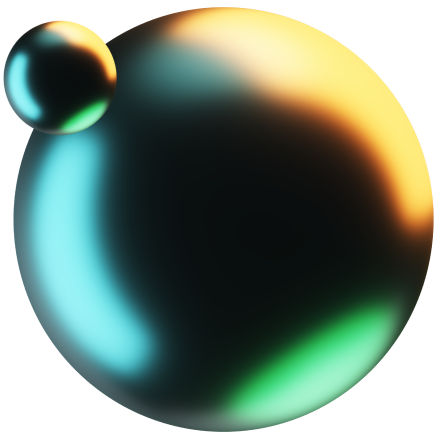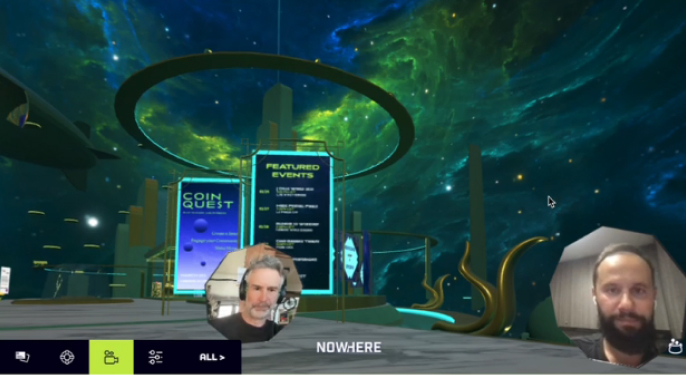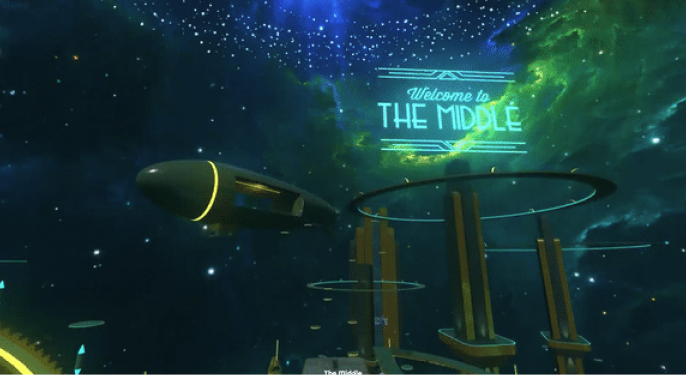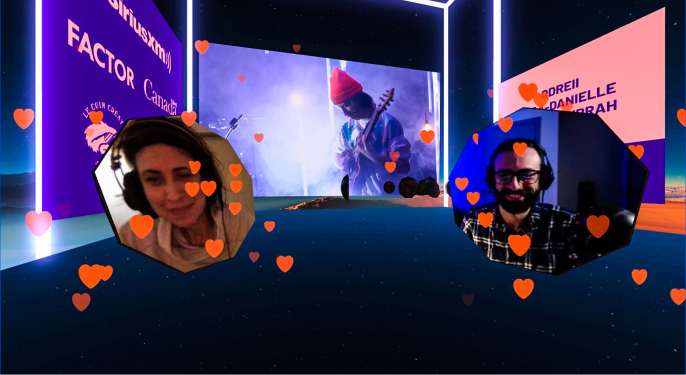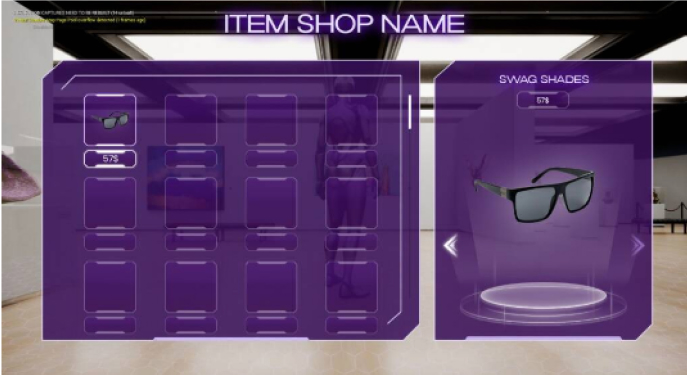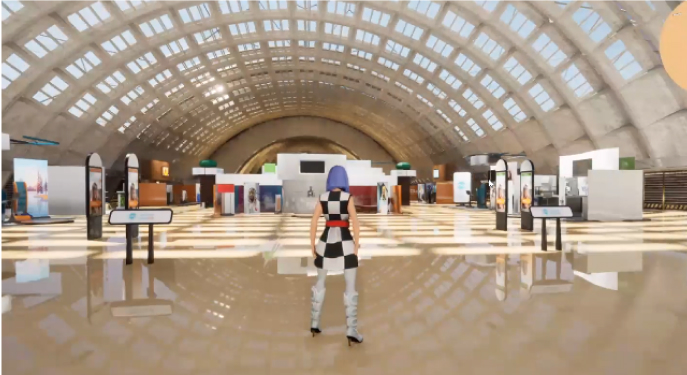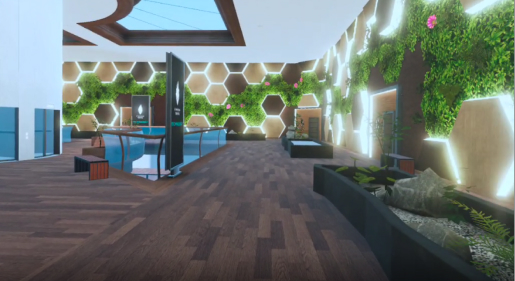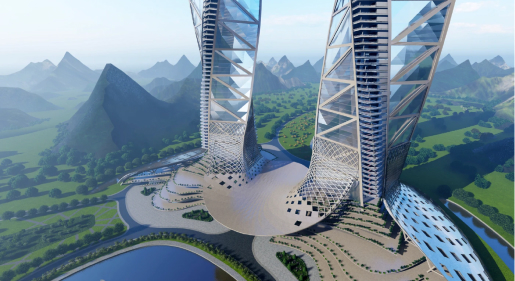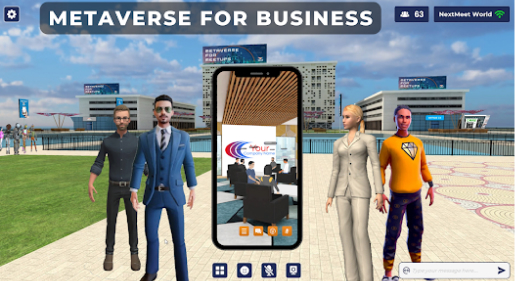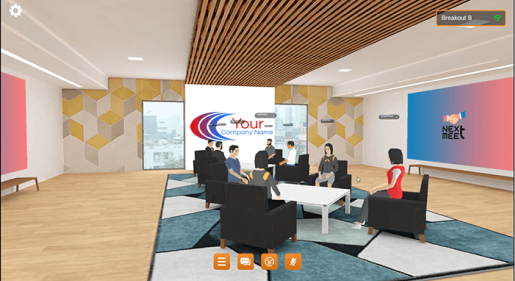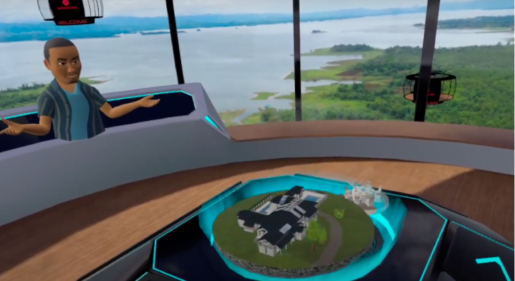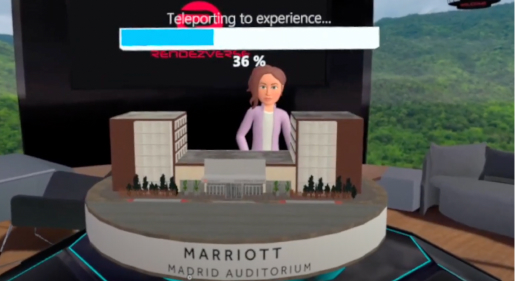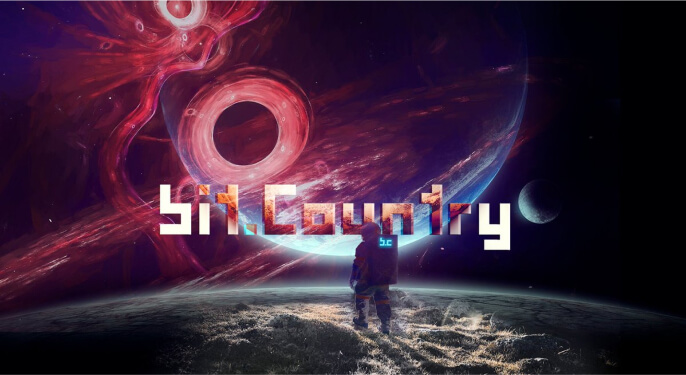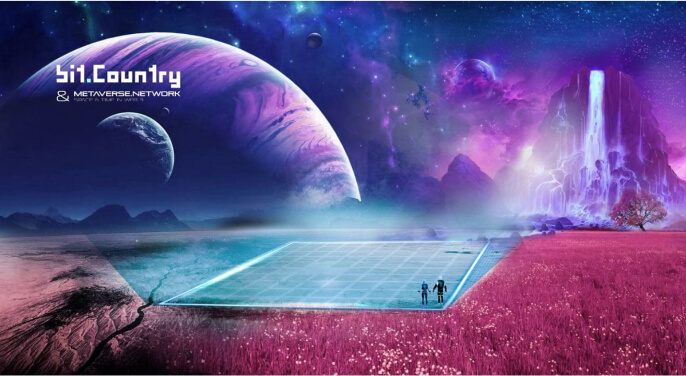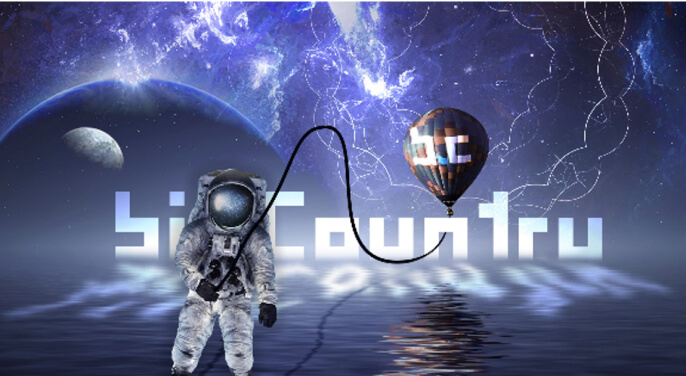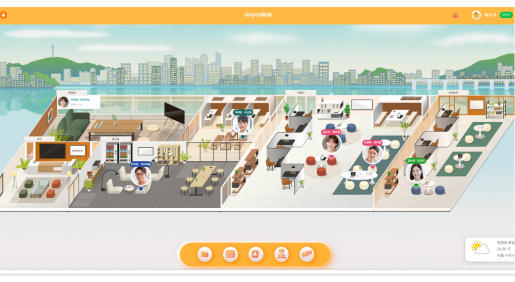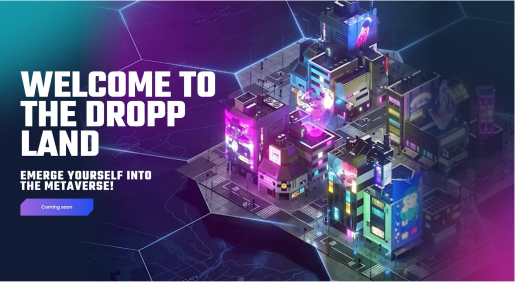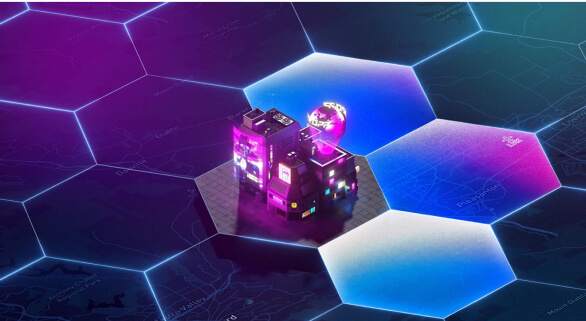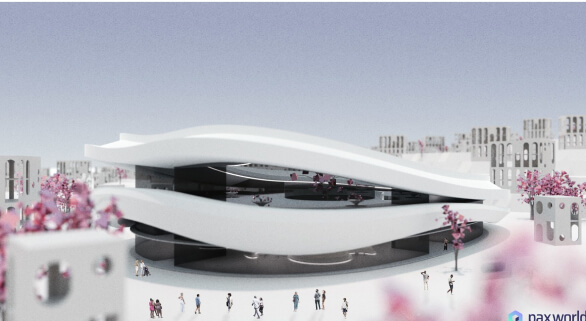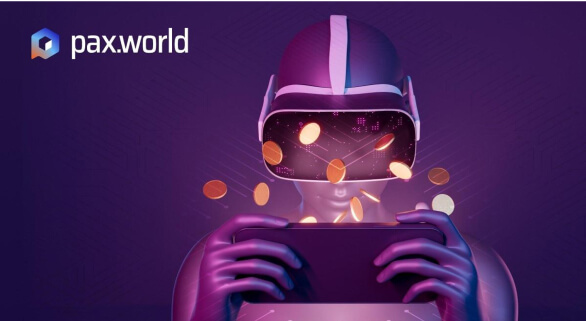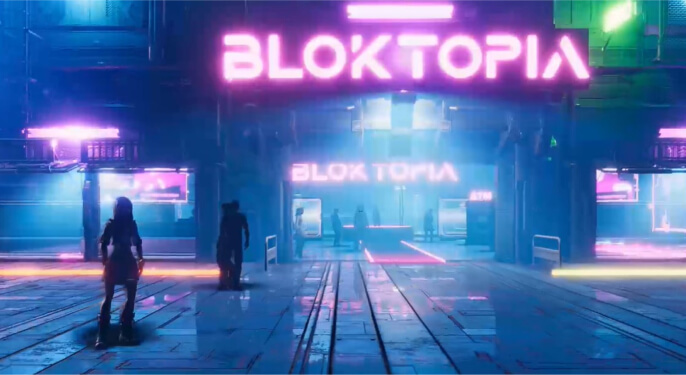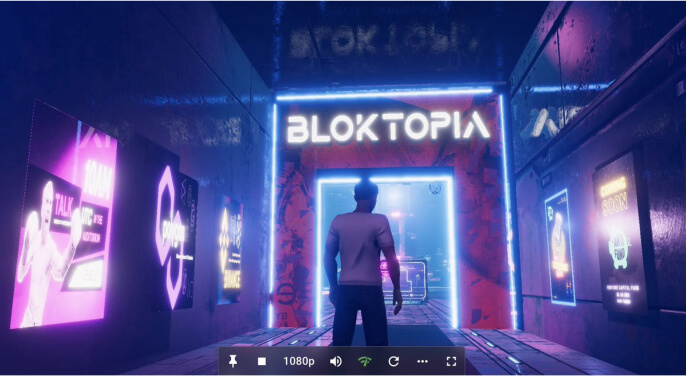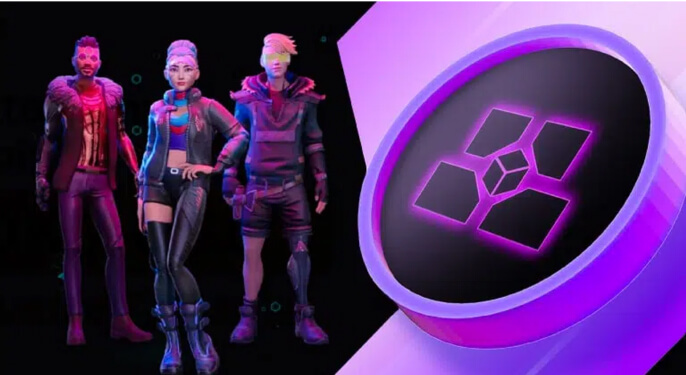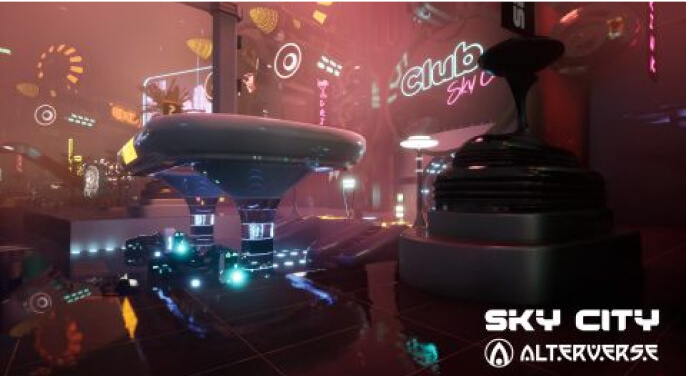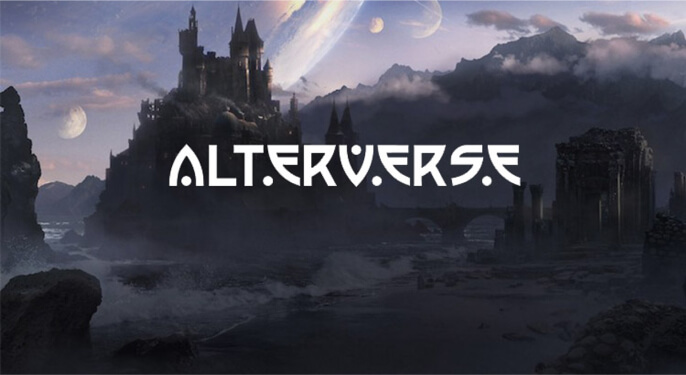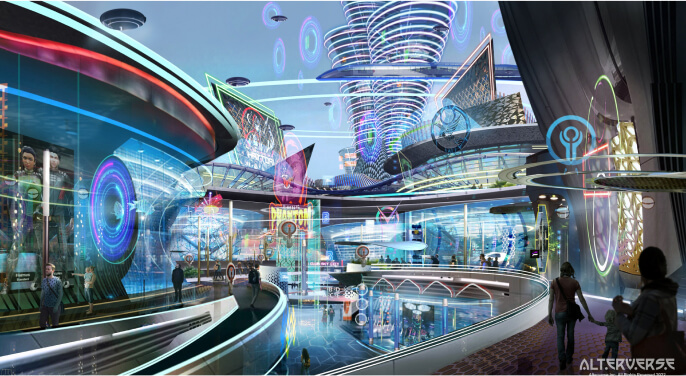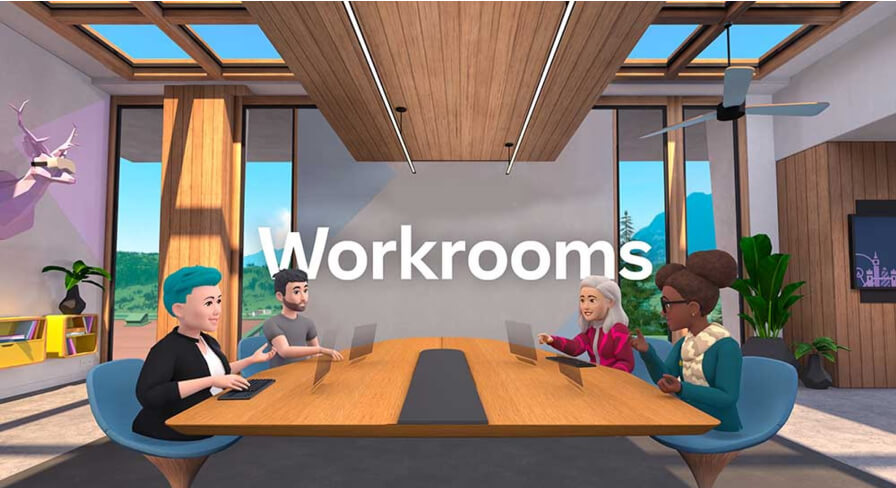

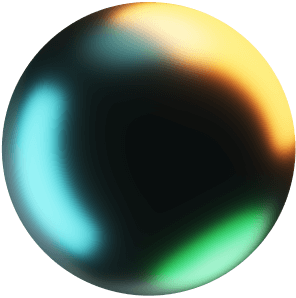
Metaverse is rapidly changing the way we play, buy and socialize. As more and more major brands enter the space, it's clear that, as long as technology continues to advance, Metaverse craze is here to stay.
As we work towards building the true Metaverse — an online, 3D, virtual space connecting users in all aspects of their lives — many projects are emerging, bringing us closer to a futuristic future. While the whole world is buzzing about trends and acquisitions, let’s focus on those who are currently building the new wave of the meta worlds — upcoming Metaverse platforms.
REPORT
30.03.2023・Read 18 min
1. Next stop: Metaverse
Before we dive into the current state of the market and what it will bring us in 2023, let's take a moment to look back at how we got here.
It’s just a small part of the events leading to the current state of the Metaverse market. The recent advancements are the result of a collaboration between developers, artists, VCs, emerging companies, and tech giants:
-
Sci-fi authors and famous business leaders who are envisioning our future;
-
Blockchain developers and NFT creators who are working on solving the problem of ownership and trade in virtual space
-
Crypto enthusiasts who are flooding play-to-earn gaming worlds
-
AR and VR companies who are trying to integrate Metaverse into our daily life seamlessly
-
Major brands pouring millions into NFT collections and Metaverse collaborations
Interest to Metaverse over time. Source: Google Trends.
All major parties are contributing to the market numbers we see today, but one decision has especially boosted the public interest to Metaverse. In October, 2021 Facebook changed its name to Meta and confirmed it’s massive investment into this space.
Metaverse isn't a thing a company builds. It's the next chapter of the internet overall.
Design studio for Web3 & Metaverse

2. Metaverse in numbers
30%
of the organizations in the world are expected to have products and services in the metaverse by 2026
$5 trillion
expected additional value of the Metaverse concept to the global economy by 2030
2023
predicted to be a key year for defining the direction of the Metaverse growth
13.1%
expected yearly growth of the Metaverse market
$783.3 billion
estimated Metaverse market size in 2024 by Bloomberg
$10 billion
Facebook is investing into the Metaverse market
Major Metaverse platforms
Founded in 2015 | Decentralized | $MANA
Source: Link
Decentraland is a leading platform in the metaverse space and is one of the first companies to utilize this technology. It is a virtual world that is powered by the Ethereum blockchain, allowing users to engage in activities such as building, trading, earning money, and exploring a 3D environment. On Decentraland, individuals can create a variety of virtual experiences, including art, games, landscapes, and more.
Users can also purchase virtual land on the platform using the native token, $MANA. The land is organized as non-fungible tokens (NFTs), which gives users full control over their virtual environment. This allows them to create 3D worlds and games for others to play.
Decentraland is structured as a decentralized autonomous organization (DAO), meaning that users essentially own the platform. They can participate in voting on ideas for changes to the platform's governance, such as UI updates and fund distribution.
Decentraland is structured as a decentralized autonomous organization (DAO), meaning that users essentially own the platform. They can participate in voting on ideas for changes to the platform's governance, such as UI updates and fund distribution.
Founded in 2004 | Centralized
Source: Link
Some may not consider Roblox to be a metaverse platform due to its lack of reliance on blockchain technology and its focus on games and virtual play rather than broader virtual experiences. Though it’s still one of the first platforms that brought millions of users to the virtual world, they can rebuild to their liking.
It is an online community platform that allows users to interact and play games created by creators and other users. The platform has virtually limitless potential because anyone can create a game on it. Some games on Roblox are free to download and play, while others may require payment for additional in-game items.
Roblox's native currency, called Robux, is used to facilitate transactions on the platform. It is important to note that Robux is a digital currency, not a cryptocurrency or token.
Roblox's native currency, called Robux, is used to facilitate transactions on the platform. It is important to note that Robux is a digital currency, not a cryptocurrency or token.
Our whole company is really focused on the innovation to drive and shepherd this vision of what some people call the metaverse — or human co-experience — forward
Founded in 2018 | Decentralized | $AXS
Source: Link
Axie Infinity is one of the most popular Metaverse platforms for gaming and often considered a metaverse because it is a virtual world that exists on the blockchain and allows users to engage in a variety of activities and experiences. It is built on the blockchain and allows users to engage in various activities, such as breeding and battling Axies and buying and selling items on the marketplace.
These Axies are represented as non-fungible tokens (NFTs) on the Ethereum blockchain, enabling players to securely own and trade them with other players. The use of blockchain technology ensures a transparent and immutable record of ownership, preventing the Axies from being counterfeited or duplicated.
While players can use their Axies to participate in battles, breed new Axies, and explore a virtual world, some may not consider Axie Infinity to be a true metaverse platform due to its focus on a specific game and set of activities rather than a broader range of experiences.
While players can use their Axies to participate in battles, breed new Axies, and explore a virtual world, some may not consider Axie Infinity to be a true metaverse platform due to its focus on a specific game and set of activities rather than a broader range of experiences.
At Axie Infinity, we build products that have the potential to educate millions of people about how to interact with blockchain technology through fascinating games and applications.
Founded in 2011 | Decentralized | $SAND
Source: Link
The Sandbox is a decentralized platform that allows users to create and share 3D gaming experiences on the Ethereum blockchain, where they can also monetize their creations through the sale of in-game assets and access.
With over 2 million registered members, The Sandbox offers a 3D modeling tool called VoxEdit for free, allowing users to design any object they can imagine, including homes, pets, and weapons. The platform also has a game maker that enables users to develop 3D games without any coding experience.
Players can participate in the governance of The Sandbox through smart contracts and voting on updates and improvements to the platform. It also has a marketplace where players can buy and sell in-game assets, such as non-fungible tokens (NFTs) representing unique items or characters.
Players can participate in the governance of The Sandbox through smart contracts and voting on updates and improvements to the platform. It also has a marketplace where players can buy and sell in-game assets, such as non-fungible tokens (NFTs) representing unique items or characters.
Our vision is to offer a deeply immersive metaverse in which players will create virtual worlds and games collaboratively and without central authority
Founded in 2020 | Decentralized | $ATLAS
Source: Link
Star Atlas is a space-themed blockchain game that allows users to create, sell, and purchase non-fungible tokens (NFTs). The platform combines blockchain technology, real-time visuals, multiplayer video games, and decentralized finance to create a unique gaming experience. It also introduces the benefits of the Solana blockchain, which enables faster transactions. In addition to the native $ATLAS token, users can also benefit from the faster transaction speed of the $POLIS token, which gives them a say in decision-making and voting within the Star Atlas Metaverse.
You can earn money in Star Atlas by creating and selling non-fungible tokens (NFTs) or by participating in the platform's governance and decision-making processes. If you are able to create popular or in-demand NFTs, you may be able to sell them for a profit. Additionally, if you own $POLIS tokens, you may be able to earn a return on your investment through voting or participating in the governance of the platform.
What we really wanted to accomplish was growing our community through the revealing and unveiling of the background, history, and lore of the Star Atlas universe. Each week you get a little bit more information about how we got to the year 2620 in the Star Atlas Metaverse.
Founded in 2020 | Decentralized | $ILV
Source: Link
Illuvium is a blockchain game that combines open-world exploration and role-playing elements. Players in the game engage in combat with creatures called alluvials, which can be captured and used to fight other players. These alluvials are represented as non-fungible tokens (NFTs) with unique appearances and characteristics. Players can also combine alluvials to create stronger creatures for combat and increased benefits.
Prices in the game are awarded in $ILV, the native token of Illuvium, which can be used to buy in-game items or staked in the Illuvium vault. As a decentralized autonomous organization (DAO), Illuvium is governed by its users, who can use their $ILV tokens to vote on governance proposals.
Founded in 2018 | Decentralized | $VOXIES
Source: Link
Voxels is a popular Metaverse platform that offers a virtual gaming environment for both VR and PC users. It is built on the Ethereum blockchain and is known for regularly organizing events for its users.
On the platform, users can build and sell virtual properties in the Metaverse, including prefabricated buildings such as art galleries, collaborative spaces, streets, and harbors, as well as vacant land parcels. Voxels also has a large marketplace for buying and selling digital items like non-fungible tokens (NFTs).

3. New Metaverse platforms to expect
Dozens of upcoming Metaverse projects are building the new evolved versions of immersive virtual experiences. Let’s look into a few platforms worth keeping an eye on in 2023.
NOWHERE
NOWHERE is an innovative social Metaverse platform that we got to experience ourselves during the interview with its Co-Founder, Jon Morris. First, we entered the futuristic and colorful lobby and talked in his office. Then we moved to a multimedia space where anyone can hold immersive events while showcasing images and videos and engaging with the audience. It’s a great space for festivals, music video premieres, live comedy, NFT drops, and networking. NOWHERE gave us a futuristic, highly interactive experience that can be great for meeting with friends, making new ones, and traveling between multiple worlds.
The platform allows anyone to create a customizable private or public space for thousands of users. All you need is a browser and the internet, a pair of headphones, and a recent computer with a webcam. Spatial audio makes interactions in NOWHERE feel natural, where people close to you are louder, and people further away are softer. You can also token gate spaces with crypto tokens, POAPs, or NFTs. NOWHERE allows creators to reach any audience and is growing especially popular among singers, comedians, and everyone who needs a powerful platform for a virtual performance.
The platform allows anyone to create a customizable private or public space for thousands of users. All you need is a browser and the internet, a pair of headphones, and a recent computer with a webcam. Spatial audio makes interactions in NOWHERE feel natural, where people close to you are louder, and people further away are softer. You can also token gate spaces with crypto tokens, POAPs, or NFTs. NOWHERE allows creators to reach any audience and is growing especially popular among singers, comedians, and everyone who needs a powerful platform for a virtual performance.
Anyone can create and customize their own space in NOWHERE to host meetings, concerts, or events with this new immersive technology. Many entertainers use the platform to build a personal connection with their audience and express themselves in a new way. You can do the same in a few clicks by simply entering the NOWHERE Metaverse on your browser.
Omniverse Сity
The Omniverse City is a platform created to bring independent businesses into Metaverse, supporting them with digital selling methods and virtual merchandising. The platform has hosted more than 8000 visitors and has many retail places available. Anybody who wants to open a virtual store can do it in the Omniverse City.
A constantly growing number of integrations with other digital services gives the user a wide range of possibilities to organize their virtual space in the City. One of the main ones is the integration with Ready Player Me, which provides every user with a customizable top-notch-looking 3D avatar.
It grew out of the original project called The Optical Metaverse – a hyper-realistic experience for the vision community with a permanent showroom where opticians can easily shop for the products they need and an optical shop where you can try on glasses virtually, putting them on your avatar.
The founder of the platform, Charlene Nichols, took us on a virtual tour, where we were amazed to see how incredible it looked. We went around the exhibition halls with art collections, spacious shops, and places to play games. The secret is that City’s team creates beautiful virtual spaces using Unreal Engine 5a, which makes The Omniverse City one of the most realistically looking Metaverse platforms on the market.
A constantly growing number of integrations with other digital services gives the user a wide range of possibilities to organize their virtual space in the City. One of the main ones is the integration with Ready Player Me, which provides every user with a customizable top-notch-looking 3D avatar.
It grew out of the original project called The Optical Metaverse – a hyper-realistic experience for the vision community with a permanent showroom where opticians can easily shop for the products they need and an optical shop where you can try on glasses virtually, putting them on your avatar.
The founder of the platform, Charlene Nichols, took us on a virtual tour, where we were amazed to see how incredible it looked. We went around the exhibition halls with art collections, spacious shops, and places to play games. The secret is that City’s team creates beautiful virtual spaces using Unreal Engine 5a, which makes The Omniverse City one of the most realistically looking Metaverse platforms on the market.
In order to be migrated into Metaverse, you need to optimize your digital presence. To help with that, we’re turning our digital marketing company into a Metaverse migration company aimed at creating a virtual presence for any business.
Ethereum Towers
Ethereum Towers is a unique virtual reality-based social platform that aims to provide a community-focused experience to its users. With over 4,388 apartments set in two towers, this platform is located in the Ethereum Worlds Metaverse. It offers a curated space for users to educate, entertain, and do business, all from the comfort of their own homes.
Using The Meta Quest (Oculus) VR headset, users can immerse themselves in a fully interactive virtual environment and experience a sense of presence that has not been possible until now. There is also a companion app, where users can set up a profile, makes it easy to connect and interact with others.
Ethereum Towers is designed to be accessible to non-gamers – with a low barrier to entry, making it easy for anyone to be part of the virtual world, where users can interact with each other in a variety of ways, including socializing, networking, and conducting business.
Ethereum Towers are the genesis project and first destination within the Ethereum Worlds ecosystem. It provides apartment owners with an evolving catalog of rare and tradeable collectibles (NFTs) that they can use to design and furnish their apartments, showcasing their unique personalities and interests. The ecosystem will be powered by its own native in-world utility token ($TWR), which fuels the social economy and sets Ethereum Towers to become a leading platform in the growing Metaverse ecosystem.
Using The Meta Quest (Oculus) VR headset, users can immerse themselves in a fully interactive virtual environment and experience a sense of presence that has not been possible until now. There is also a companion app, where users can set up a profile, makes it easy to connect and interact with others.
Ethereum Towers is designed to be accessible to non-gamers – with a low barrier to entry, making it easy for anyone to be part of the virtual world, where users can interact with each other in a variety of ways, including socializing, networking, and conducting business.
Ethereum Towers are the genesis project and first destination within the Ethereum Worlds ecosystem. It provides apartment owners with an evolving catalog of rare and tradeable collectibles (NFTs) that they can use to design and furnish their apartments, showcasing their unique personalities and interests. The ecosystem will be powered by its own native in-world utility token ($TWR), which fuels the social economy and sets Ethereum Towers to become a leading platform in the growing Metaverse ecosystem.
We are excited for people to start using their luxury virtual Apartments this summer, we have developed a VR first user friend Metaverse that anyone could use without any training or gaming experience.
NextMeet
NextMeet is an Avatar-based Immersive PC/VR platform that enables remote working, collaboration, meetings, distance learning, and events. It creates a virtual experience for workers, attendees, and students to meet and socialize worldwide.
During the interview with the Co-founder of NextMeet, Pushpak Kypuram, we went through the virtual world of NextMeet – open space areas, networking lounges, and conference halls. There you can display content on a web screen and create your own digital space customizing it to represent your brand.
Once you get to the platform, you start using your own multifunctional avatar that has many opportunities for self-expression, for example, shaking hands or dancing. NextMeet Team is working on more features to make communication on NextMeet as natural as possible. You can already try some of them, like taking a selfie with other guests.
The DIY style of the platform makes it attractive to a wide range of visitors. NextMeet has clients from various industries and sectors like the auto industry, hospitality, and healthcare, universities.
During the interview with the Co-founder of NextMeet, Pushpak Kypuram, we went through the virtual world of NextMeet – open space areas, networking lounges, and conference halls. There you can display content on a web screen and create your own digital space customizing it to represent your brand.
Once you get to the platform, you start using your own multifunctional avatar that has many opportunities for self-expression, for example, shaking hands or dancing. NextMeet Team is working on more features to make communication on NextMeet as natural as possible. You can already try some of them, like taking a selfie with other guests.
The DIY style of the platform makes it attractive to a wide range of visitors. NextMeet has clients from various industries and sectors like the auto industry, hospitality, and healthcare, universities.
Most 3D environments work on a high-end graphic system or configuration. We wanted to reach out to the masses when we were building NextMeet. That is why one of the main factors for us was to bring NextMeet to any device suitable for collaboration meetings, and now our app is stable with more than 600 concurrent users.
RendezVerse
The RendezVerse platform allows users to meet prospectsthrough 360-degree tours of real-world spaces or full CGI digital twins, which offer the opportunity to virtually attendevents or conduct visual site inspections in real time, adjustingfor specific conditions such as sunlight or the number ofpeople attending. It is already trusted by major hospitalitycompanies such as Marriott Auditorium Madrid, ‘Atlantis, thePalm’, IHG Paris le Grand, Movenpick Hotel Amsterdam andmany others.
Using AI and VR-powered technology, this metaverse-as-a-service (MaaS) creates immersive experiences for the event and hotel industry, significantly reducing the need for on-site inspections and helping the hospitality industry minimize its digital footprint. This technology also provides an alternative for individuals who may be unable to attend events due to illness or other disruptions. Guests can enjoy a immersive experience of attending an event or booking a venue from anywhere in the world.
Using AI and VR-powered technology, this metaverse-as-a-service (MaaS) creates immersive experiences for the event and hotel industry, significantly reducing the need for on-site inspections and helping the hospitality industry minimize its digital footprint. This technology also provides an alternative for individuals who may be unable to attend events due to illness or other disruptions. Guests can enjoy a immersive experience of attending an event or booking a venue from anywhere in the world.
We can cut down the physical site inspections by 80%. Theseinspections generate about half a 1 billion kilograms of CO2 emissions a year. So our technology is helping the hospitalityindustry reduce its carbon footprint.
Bit.Country
Bit.Country is a newcomer to the metaverse space that has gained popularity for its unique approach. It is a metaverse platform that allows users to create and customize their own metaverses, which are named after the user and can be as large and complex as desired.
The platform is designed to be user-friendly and requires no technical knowledge to build and customize a metaverse. Each metaverse comes with an NFT marketplace, map engine, land economy, NFT facilities, and customizable 3D world engine, which gives users a wide range of options for building and monetizing their metaverse. Bit.Country is described as the Metaverse-as-a-Service (MaaS) and is intended to be a build-and-go system that allows users to easily create and customize their own virtual worlds.
The platform is designed to be user-friendly and requires no technical knowledge to build and customize a metaverse. Each metaverse comes with an NFT marketplace, map engine, land economy, NFT facilities, and customizable 3D world engine, which gives users a wide range of options for building and monetizing their metaverse. Bit.Country is described as the Metaverse-as-a-Service (MaaS) and is intended to be a build-and-go system that allows users to easily create and customize their own virtual worlds.
JoyCollab
JoyCollab is a metaverse platform that helps organizations communicate and collaborate by providing a virtual office space with avatars and various communication and information-sharing features. JoyCollab cloud service is being provided since May 2022, along with the development of a world version of JoyCollab that’ll become available in middle of 2023.
This platform enhances visibility and open communication, allowing members to display positive energy and improve collaboration. It offers meeting and office rooms, a lounge for guests and coworkers, and other features such as shared calendars, bulletin boards, and to-do lists to facilitate coordination and productivity. JoyCollab spaces and features can be customized to meet the needs and style of the organization.
This platform enhances visibility and open communication, allowing members to display positive energy and improve collaboration. It offers meeting and office rooms, a lounge for guests and coworkers, and other features such as shared calendars, bulletin boards, and to-do lists to facilitate coordination and productivity. JoyCollab spaces and features can be customized to meet the needs and style of the organization.
JoyCollab can help organizations struggling with remote work to boost employee morale and foster a sense of community by improving visibility and providing virtual spaces and avatars.
Dropp GG (Rebase)
Dropp is a metaverse platform focused on augmented reality (AR) experiences. It has raised $8 million in funding to develop a unique approach to combining real-world activities with a proprietary metaverse environment. Dropp aims to create a metaverse that is layered on top of the real world, allowing users to buy virtual real estate in specific physical locations and customize it with NFTs, virtual spaces, and other features. According to the company's website, this approach gives Dropp unique opportunities, such as the ability to mint NFTs in physical locations, which can generate interest and excitement.
At the same time, the platform still maintains many of the traditional features of a metaverse, such as land purchases and a sense of ownership. Dropp is notable for being the first metaverse to blend these two realms in a meaningful way, allowing users to experience both the physical world and the metaverse simultaneously.
At the same time, the platform still maintains many of the traditional features of a metaverse, such as land purchases and a sense of ownership. Dropp is notable for being the first metaverse to blend these two realms in a meaningful way, allowing users to experience both the physical world and the metaverse simultaneously.
PAX World
Pax.World is a metaverse platform built on the Polygon blockchain. It allows users to create and customize virtual worlds, trade non-fungible tokens (NFTs), and rent or develop virtual real estate. The platform's native token, $PAXW, is used to facilitate these activities. Recently, Pax.World announced a partnership with Prince Harry and Meghan Markle to launch a new virtual space called Meg-averse.
Bloktopia
Bloktopia is a metaverse platform built on the Polygon blockchain that focuses on providing a fully immersive virtual reality experience. It is set in a 21-level skyscraper and is designed to be graphically intense. The platform is already set up for businesses to integrate, with advertising space available throughout the virtual world. Bloktopia aims to position itself as a source of information about the metaverse and NFTs, as well as offering opportunities for users to earn crypto, buy and sell virtual assets, and more. It is focused on the VR space and is intended to be a content-driven platform that attracts users as a source of information.
You can’t have several immersive experiences at once in Zoom. You can’t interact with more than one person. The metaverse is a much more socially engaging tool. You can interact with people/ brands. Watch live or recorded content, including concerts or sporting events. Order food/ clothes. You can do anything that you can do in the real world and more but from the comfort of your own home.
Alterverse
Alterverse is a highly anticipated Metaverse that has not yet launched. It is known for its futuristic models of real-world cities, such as Dubai, London, and New York City, which users can explore. The platform offers a range of features, including the ability to build your own house, customize characters, use built-in voice chat, and access NFT assets and skins. Players can also operate their own servers.
One notable feature of Alterverse is its in-house transaction system, which allows users to buy and sell land, NFTs, and other items within the Metaverse itself rather than being referred to an external shop.
One notable feature of Alterverse is its in-house transaction system, which allows users to buy and sell land, NFTs, and other items within the Metaverse itself rather than being referred to an external shop.

4. Major trends
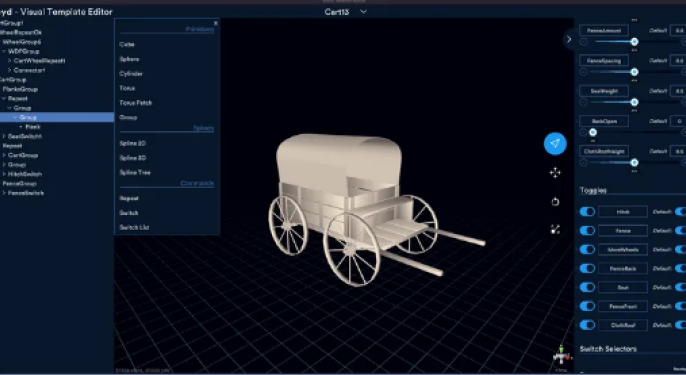
Source: Link
It takes a lot of time and money to create 3D graphics for virtual worlds, but design automation tools are on the path to changing that. We had a chance to talk to Avi Lanter, a co-founder of Sloyd – a platform for 3D modeling that helps to save time on creating virtual environments and easily designing 3D objects like props, weapons, collectibles, and architectural assets. He showed us how you could create a 3D gun and customize it in a few clicks, switching different parts of the barrel and changing other parameters. This way, the platform allows the creation of hundreds of different variations of the objects in a very short time, generating millions of vertices in less than 16ms.
3D in Sloyd is created from code, that’s what allows real-time. It’s also ideal for automation. Now we’re adding text input, so
the AI understands the text prompt and also auto assembles sub-parts into a model.
the AI understands the text prompt and also auto assembles sub-parts into a model.
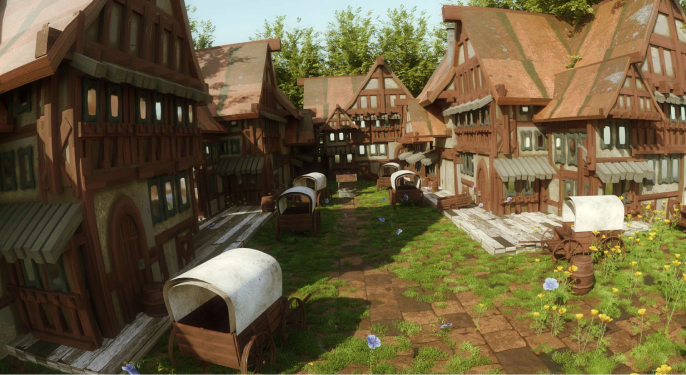
Source: Link
The Sloyed team is also working on the SDK for runtime generation, which will help every game developer to unleash real-time 3D creation in their virtual environment. Sloyd is growing fast, with more than 30 upcoming partnerships and current collaborations with Nvidia, Innovation Norway, and OverWolf.
Imagine a Metaverse where users have their place or room, and they can make it personalized. With Sloyd, users can realize it and move that personalized place between different Metaverses.

Source: Link
More and more major brands are getting into virtual worlds and Web3 space using Metaverse as a new marketing channel
Brands will need to rethink their narratives in three dimensions and that marketers will need to embrace emerging technology at a faster speed. In the metaverse, everyone is a world builder, including brands.
Metaverse-as-a-service (MaaS) platforms are driving the popularity of the "digital twins" –—virtual simulations of real-world products, processes, or operations that are used for testing and prototyping in a safe digital environment.
With our digital twins, a venue can offer a backup if some people can't arrive because of travel, disruptions, or illness. They can still actually attend the event live.

Source: Link
While not everyone believes that using headsets is the only way to enter the metaverse, they are a popular method for creating immersive experiences and we can expect to see new developments in the field in 2023.

Source: Link
It is predicted that in 2023, we will see more advanced applications of technology such as motion capture, which will allow avatars to more closely mimic our unique gestures and body language.
We agree with those who believe that B2B will be a major driver of Metaverse growth in the next few years. So we’re working on the next part of IMPLY Metaverse report, researching potential ways for brands to collaborate with Metaverse platforms and interviewing the founders of upcoming platforms.
Subscribe to be the first one to know about our next Review
